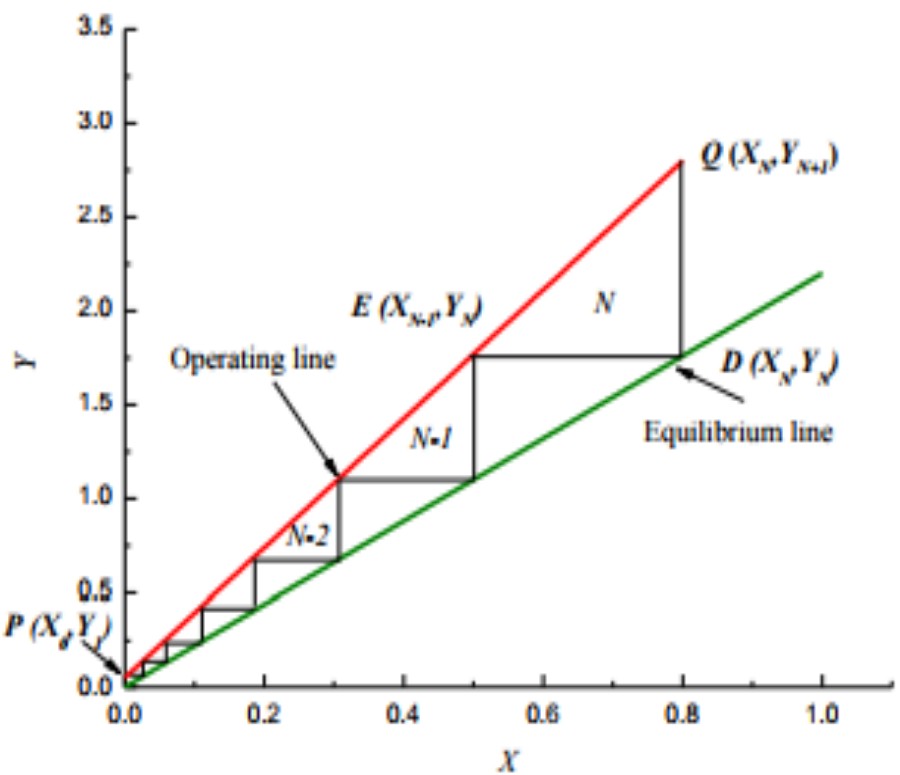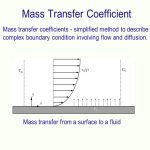In tray absorption tower, multi-stage contact between gas and liquid takes place. In each tray, the liquid is brought into intimate contact of gas and equilibrium is reached thus making an ideal stage. In ideal stage, average composition of liquid leaving the tray is in equilibrium with liquid leaving that tray. The most important step in design of tray absorber is the determination of number of trays. The schematic of tray tower is presented in figure 4.7. The liquid enters from top of the column whereas gas is added from the bottom. The efficiency of the stages can be calculated as:


The following parameters should be known for the determination of “number of stages”
(1) Gas feed rate
(2) Concentration of gas at inlet and outlet of the tower
(3) Minimum liquid rate; actual liquid rate is 1.2 to 2 times the minimum liquid rate.
(4) Equilibrium data for construction of equilibrium curve Now, the number of theoretic stages can be obtained graphically or algebraically.
Graphical Method for the Determination of Number of Ideal Stages

If the stage (plate) is ideal, (Xn, Yn) must lie on the equilibrium line, Y*=f(X) Top plate is located at P(X0, Y1) and bottom plate is marked as Q(XN, YN+1) in X-Y plane. A vertical line is drawn from Q point to D point in equilibrium line at (XN, YN). From point D in equilibrium line, a horizontal line is extended up to operating line at E (XN-1, YN). The region QDE stands for N-th plate (refer Figure 4.8). We may get fraction of plates. In that situation, the next whole number will be the actual number of ideal plates. If the overall stage efficiency is known, the number of real plates can be obtained from Equation




Comments are closed